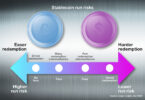Last week the Bank of Japan (BoJ) published an interim report on its central bank digital currency (CBDC) work. It revealed that it launched a CBDC API Sandbox this month, giving a nod to the Bank of England’s Project Rosalind. The central bank ran two previous proofs of concept (PoCs) for the digital yen, the latest ending a year ago.
In contrast to the PoCs the latest work extends beyond the CBDC platform, involving end-to-end experiments including with intermediaries. Apart from APIs it’s exploring interoperability with external systems more generally and additional functionality.
A key feature of the latest activity is extensive industry engagement with five working groups. So far quite a bit of work is desk-based research, but the Bank of Japan plans to experiment based on the results.
Additional CBDC functionality
Examples of additional functionality explored in the current phase include privacy and scalability. On the privacy front, the central bank wants to separate personal data from payment data, mentioning the digital euro as an example. However, the paper also explores potentially selling data including details about purchases if users provide consent.
If this path is pursued the BoJ suggests that the data distribution function should be external to the central bank and intermediaries.
In terms of scalability, the CBDC platform needs to be capable of processing tens of thousands of transactions per second during normal periods and more than 100,000 transactions per second during peak times.
Other functionalities discussed included compatibility with offline payments, extending functionality including programmable payments, and security.
Digital Yen working groups
The topics covered by the working groups include:
- WG1 Connection between CBDC system and external infrastructure/systems
- WG2 Additional services and CBDC ecosystem
- WG3 KYC and user authentication/authorization
- WG4 New technologies and CBDC
- WG5 User devices and UI/UX
A sixth working group plans to explore the coexistence between CBDC and other payment methods, including electronic money.
The Bank of Japan hasn’t yet made a decision to launch a CBDC. It might find it challenging to promote given consumer awareness of the concept is exceptionally low in Japan. The BoJ is also participating in Project Agora, the BIS project for cross border payments using tokenization. Meanwhile, the first Japanese tokenized deposit solution DCJPY is expected to launch in the coming months.






